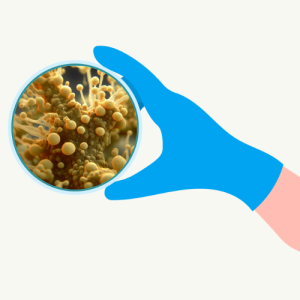On this page: Background | Educational Resources | Setting-Specific Resources | Patient Resources | Data & Reporting | Laboratory Testing | Collaborations

Background
Candida auris, or C. auris, is a type of yeast first found in 2009. It’s a serious global problem because it’s difficult to treat and control. More and more patients are getting infected with it. C. auris spreads easily from person to person and can live on surfaces in healthcare settings. It’s often hard to identify using regular methods and is usually resistant to many medicines. Infection prevention is an important strategy to stop the transmission of C. auris. This includes using key safety measures, picking the right cleaning products, and making sure staff follow infection prevention rules.
Public Health Response:
VDH works with healthcare facilities to slow the spread of these dangerous organisms and follows the CDC Guidance for a Public Health Response to Contain Novel or Targeted MDROs. Facilities should collaborate with their local health departments on response efforts.
Educational Resources
- C. auris: Infection Prevention and Control for Healthcare Facilities (educational booklet)
- C. auris and CPO Colonization Screening 101 (slides, recording)
- Hand Hygiene
- Infection Control Precautions
- Infection Prevention and Control
- Infection Prevention Rapid Resources
- Personal Protective Equipment
- MDRO Flags Embedded in Electronic Health Records
- Updated Prevention & Containment Response for Targeted Multidrug-Resistant Organisms in Virginia (slides, recording)
VDH Infection Prevention and Control Assessments: The HAI/AR team is available to conduct a no-cost, non-regulatory, onsite visit to help a facility identify its infection prevention strengths and areas of opportunity.
- C. auris website
- Infection Prevention for C. auris
- Project Firstline - check the Education & Training Resource Library for infection prevention and control materials.
Environmental Protection Agency
Virginia Healthcare-Associated Infections Advisory Group
- Virginia Infection Prevention and Control Training Alliance (VIPTA) - search the education and training resource library for resources related to C. auris
VCU Virginia Infection Prevention Training Center
- Virginia Infection Prevention Training Center (VIPTC) - courses and trainings related to infection prevention and control
Setting-Specific Resources
CDC Interfacility Transfer Form - The patient transfer form helps make it easier to share information when patients are moved between different places for care. Hospitals and groups focused on making patient safety better can change and use this form to fit their needs.
Candida auris resources specific to hospital settings:
View Hospitals homepage
Candida auris resources specific to long-term care settings:
Nursing Homes/Skilled Nursing Facilities
Patient Resources
Data & Reporting
Data & Impact
Virginia Communicable Disease & Outbreak Reporting Requirements
The State Board of Health updated the Virginia Regulations for Disease Reporting and Control (12 VAC 5-90-80) effective November 14, 2018. C. auris was added to the reportable disease list and conditions reportable by directors of laboratories. Thus, the responsibility for reporting the presence of these organisms rests with physicians, directors of medical care facilities, and directors of laboratories.
Laboratory Testing
- C. auris isolate testing at DCLS- Information for clinical laboratories submitting yeast isolates to DCLS.
Collaborations
The Emergency Department Care Coordination (EDCC) Program, started in 2017, connects healthcare facilities like hospitals and nursing homes across the state. EDCC now includes alerts for Candida auris and other drug-resistant organisms (MDROs). Since these alerts aren’t updated in real-time and only cover patients known to VDH, facilities should share MDRO status when transferring patients. VDH suggests using the CDC Inter-Facility Infection Control Transfer Form for complete MDRO information. Note: The MDRO flags are an extra tool, not a substitute for direct communication.
